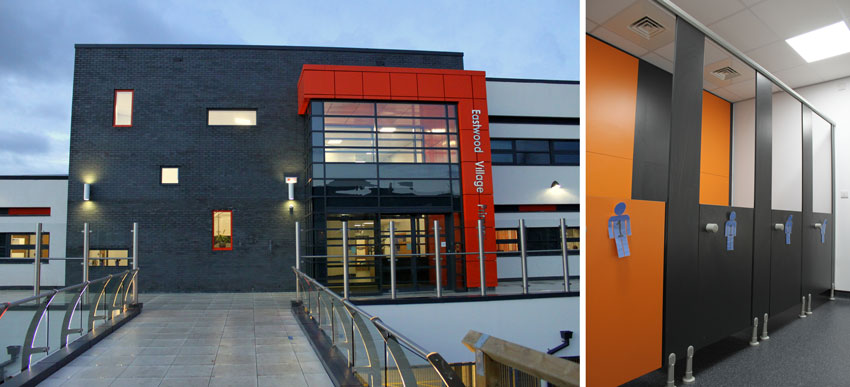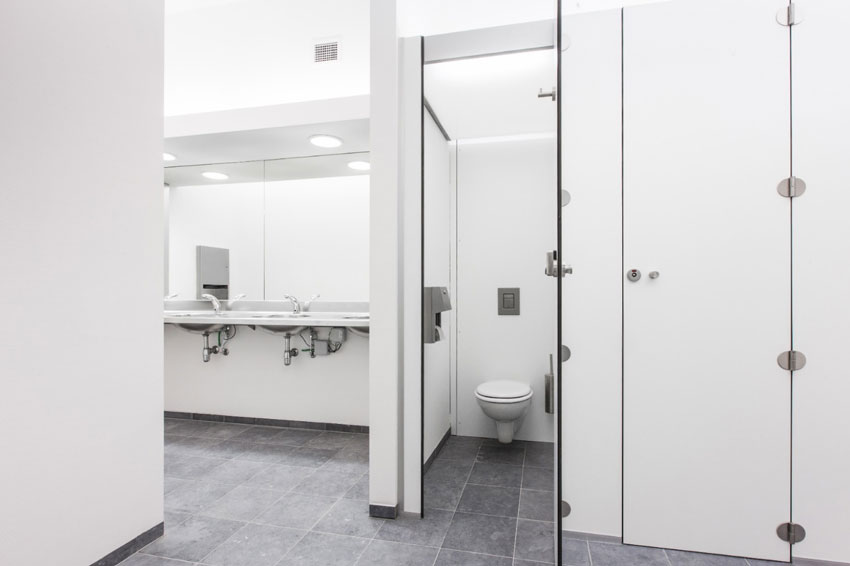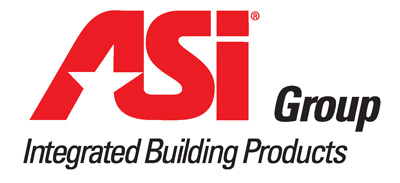Bathroom Design: The Differentiating Factor
Toilet Room Accessories
Toilet room accessories are crucial to a successful restroom design and make a big impact on how your restroom is perceived. They also impact the ease of maintenance, so selecting the right products is important.
Often, details viewed as minor, like accessory choices, are left to a building manager. This can lead to mismatched selections and a disruption of aesthetics in the washroom. In the end, these post-design selections can cost more than those planned for installation at the product’s inception. Alternately, product selections may be made casually, without input or provision of proper certification from the manufacturer.
Stainless steel accessories are a go-to for durability and sleek appearance. Stainless steel also reduces the corrosiveness of the steel to various materials. Lower-grade steel will corrode much faster with various materials, a crucial note in relation to the cleaning agents that janitorial staff uses within the bathroom.
Stainless steel products vary in gauge, from 22 gauge, the baseline CSI specification, to 16 gauge, appropriate for high-use environments. Stainless Steel accessories are traditionally fabricated utilizing 304 stainless steel. This grade of stainless is the standard for the washroom industry.
Nevertheless, some manufacturers may use a lesser grade of stainless with lower nickel and chromium levels. These lower content levels directly affect the corrosion resistance of the material and will lessen the life cycle of any accessory that is supplied in this manner. It is wise for designers or building owners to ask for certification of 304 stainless steel. By carrying design through to accessories, the architect ensures that choices and material selections are complimentary.
Free dispensers or systems offered by consumable companies, like paper towel suppliers, take away from the overall design intent of the architect, may not be ADA compliant, and are aesthetically disruptive and cheaply made.
Manufacturers who provide accessory collections can help provide a unique solution for various project types, whether designing for a high-profile project or seeking a minimalist look. The number of accessories will of course depend on the number of stalls and volume of use.
Mirrors
Mirrors are also a design element that make a visual impact by their very nature. Mirrors can increase security by allowing a sightline from the entrance to the back of the restroom. Thoughtlessly placed mirrors, however, may provide a view from outside to areas where privacy was intended, such as the urinals in a men’s room, according to the American Restroom Association.
Mirrors are an important consideration to your restroom design. Building users may visit the restroom solely to use the mirror to check their appearance; inclusion of a full-body mirror in the design may be a consideration.
Hand Dryers and Paper Towel Dispensers
A current consideration in regard to sustainability in commercial restrooms is the hand dryers versus paper towels debate. It is generally perceived that hand dryers are more environmentally friendly and have a lower carbon footprint than paper does, but high-speed hand dryers are often loud and disruptive. This noise adds an element of stress to a space. Some dryers that collect water may be breeding grounds for germs and bacteria. Some dryer manufacturers use moisture management systems to eliminate stagnant water and also use a multilayer filter: carbon for odor, antimicrobial to eliminate bacteria, and HEPA to remove air particulates.
Specifying both not only gives users a choice, it can also help mitigate issues and drawbacks of using just one or the other. Paper towel usage is also managed. Paper towel dispensers can be filled according to janitorial schedules; patrons can always use the electric hand dryers when paper dispensers run out. Less wear and tear on both also means greater longevity of use and less maintenance. The debate between hand dryers and paper does not have to be an either/or, as both serve purposes and can be used either in concert in the same bathroom or individually in different bathrooms within the same building.
Waste Receptacles
Overflowing trash bins and waste receptacles can be a major issue for restroom cleanliness and, in turn, user experience. Specifying the right size and number of receptacles based on user volume is important. Fixed, recessed receptacles and locked receptacles can also help minimize vandalism.
Soap-Dispensing System
One of the challenges for any facility management team is to keep consumables filled, particularly during high-volume events or seasons. That includes keeping up with soap dispensers in restrooms. Specifying systems that make this maintenance task easy and cost effective ensures a better occupant experience in the restroom. Certain dispensing systems use a multi-feed, top-fill soap-dispensing method, allowing a maintenance person to refill up to six soap dispensers at once, using a fill-port located on the countertop. This saves both time and money and keeps the restroom performing as designed.
Having choice in washroom products and accessories allows for a premium selection that maximizes aesthetic and durability benefits in place. Choice also means the potential to utilize more than one type of material, if applicable, in a design. Don’t be afraid to use manufacturers as reference points in both installation and care. Design professionals must become familiar with maintenance procedures and materials if they are to protect their designs and create truly sustainable projects.

Project: Eastwood Primary School
Location: United Kingdom
The theme of the design is carried throughout, including into the restroom, at this U.K. primary school.
Supporting Cast: Realizing the Best Restroom Through Design Collaboration
Many elements and many pieces combine to create great restroom design. The key to successful restroom design is collaboration. The importance of working together with all parties stretches throughout the project: from understanding the owner’s needs, to crafting architectural design and adopting it to the design intent, to working with manufacturing to determine production capabilities, product range, and innovations, to finally working with the contractors in the field, collaborating between the various trades.
An integrative process for a well-designed bathroom goes beyond checklists and encourages collaboration during preliminary, predesign, and design development stages, when clarifying the owner’s aspirations, performance goals, and project needs will be most effective in improving performance. The integrative process measures performance and sets up feedback mechanisms. Feedback is critical to determining success in achieving performance targets, informing building operations, and taking corrective action when targets are missed.
Commercial bathrooms may have differing metrics that different constituents measure them by. It is incumbent on the architect who is trained to understand the needs of a variety of people affected by the design to balance design intent, cost, functionality, safety, environmental friendliness and a host of other critical areas to ensure the best outcome.
It is the architect who makes the case for what materials are used, what products get specified, and how much space and budget should be assigned to a restroom. How the architect pulls all this together will ultimately reflect on their own reputation and that of the building owner.
Architects and designers help shape our culture and society, and they have a greater responsibility than they receive credit for. They influence how people live, play, travel, work, behave, interact, dream, and feel about themselves and those who touch their lives. Architecture is more than memorable structures, beautiful entryways, and well-appointed landscapes. Architecture is about form meeting function in a way that both exist in a delicate balance that does not overpower the other.
Products and design that work well together result in sustainability. A sustainable washroom has a design professional behind it who thoughtfully planned a maintainable, durable design with an eye toward initial and total life-cycle cost and pleasing aesthetics. This forward thinking helps guarantee the longest possible life cycle of use for each component in the design: from partition material, to assembly construction, to individual hardware and accessories.
Considering the life cycle of the product means making a selection so that product doesn’t end up in a landfill. Use of appropriate materials is a significant part of developing a sustainable installation. Designing for maintainability over the life of a project is a key aspect of life-cycle cost. Despite everything we know about designing to first costs, we still find ourselves seeking to minimize the initial material costs. Having an excellent working relationship with manufacturers and suppliers offering multiple options allows a designer to have access to the very best selection for the unique project.
Similarly, having a choice in washroom partitions, washroom accessories, and lockers in a facility allows for a premium selection that maximizes aesthetic and durability benefits. Choice also means the potential to utilize more than one type of material, if applicable, in a design. Don’t be afraid to use manufacturers as reference points in both installation and care. Design professionals must become familiar with maintenance procedures and materials if they are to protect their designs and create truly sustainable projects. Maintenance should be first, not last. Most product installation manuals have some minimum discussion about maintenance and use of cleaning products.
It’s worthwhile noting that working with a manufacturer who provides a full spectrum of restroom products designed to complement each other can be a tremendous benefit to the cohesiveness of a design. Such manufacturers promote and support a comprehensive and cohesive approach to restroom design, so they will be valuable resource.
Paying attention to the details of the available products and systems on the market allows a restroom design to be optimized for users, maintenance, and cost effectiveness.

Project: Residence Palace
Location: Belgium
While it is hard to assign a monetary value to great restrooms, they have a real, tangible affect on building occupants.
Looking to the Future: Design Tools, Innovation, and Bathrooms
A well-designed bathroom can be the deciding factor in elevating a building from good to great. Bathrooms and lockers rooms are more private and personal and are used much more frequently than entryways and building facades. If given the requisite attention to detail, a well-thought-out bathroom can make a much greater positive impact on the user experience of a building.
Cyrus Boatwalla, director of marketing, ASI Group, notes that “a well-designed bathroom can be the deciding factor in elevating a building from good to great. Bathrooms and lockers rooms are more private and personal and are used much more frequently than entryways and building facades. If given the requisite attention to detail, a well-thought-out bathroom can make a much greater positive impact on the user experience of a building—thus influencing their opinion of the school, the town, and the architects who designed the building.”
Innovation is fostering design leaps in the bathroom, to the benefit of both the architect and the occupant.
Building products manufacturers can now provide detailed BIM 3-D drawings of their products, called BIM objects, on their websites.
“BIM enables closer collaboration between designers, contractors, subcontractors, and owners,” Boatwalla adds. “It also helps building products manufacturers work in more consultative ways with architects. We can help architects choose products that will provide the longest life cycle for the application. For instance, we would advise an architect to spec solid plastic or phenolic partitions for humid areas, such as shower stalls in locker rooms. The old-style plastic laminate is not ideal in moist or humid environments, although the newer ones with special moisture-resisitant edgebanding have a great durability in more humid environments.”
“We pull BIM objects off of websites all the time. BIM makes the design and construction process more integrated. It requires earlier decisions and executions, and it makes us work faster and more efficiently,” says Mike Schipp, AIA, CDT, LEED AP BD+C, a principal in the Indianapolis office of Fanning Howey, a national K-12 school planning and design firm.
BIM enables substantive collaboration and speeds the design and construction process both generally and in restrooms and locker rooms. Collaborative BIM designs are enhancing hygiene as well as vandalism resistance in restrooms and locker rooms.
Looking to the Future: A Pivotal Focus on Hygiene and Health
A topic foremost on everyone’s mind and driven into the spotlight by the COVID-19 pandemic, particularly in public spaces, is hygiene. A new battery of CDC guidelines recommends washing hands frequently if we are in a public space, or after sneezing, coughing, or blowing your nose. Older approaches to hygiene have left the design community wanting and new solutions and approaches are needed.
Thankfully, architects are often inspired to come up with fresh ideas during the midst of a crises—and there is not a much bigger one we have faced in our lifetime.
Cyrus Boatwalla, director of marketing, ASI Group, notes, “In the construction industry we need to plan for future Black Swan events—not just COVID-19. If we only plan to combat the types of pandemic we are facing now, we will be fighting a war based on yesterday’s experience. As our planet gets more populated and as we face the potential of harsher weather, we must build to a variety of different potential threats. Now is the time to take the blinders off, to use an old cliché, and to think of things we never thought of before or to anticipate events we thought would ‘never happen in my lifetime.’ Work with forward-thinking product manufacturers who will offer you a more complete pallet of products to choose from as you design our future.”
It may feel like there are more questions today than answers. Will design changes be legislated or market driven? How do we practically separate people while still allowing them to meet their fundamental need to be social? Can we expect more pandemics in the future or was this a once-in-a-hundred-year event?
Yet there are several guideposts to the future:
- Regardless of the specific questions, one can imagine that, moving forward, public spaces will be designed for minimum human contact, with more automation and touch free experiences actuated by voice command.
- Future designs may need to develop multipurpose, adaptable buildings, with built-in flexibility which would allow segments of a building to morph into use for different scenarios. There will be a move to retrofitting existing buildings so that areas of a building can be segregated to restrain the movement of people between departments.
- Public bathrooms where standard doors were once the norm will be altered wherever possible to eliminate the doors and create S-curve entrances.
- Hands-free technology in bathrooms will become the norm. Where there is inevitable contact with surfaces, designers will increasingly look out for antimicrobial products coatings and materials to frequently touched surfaces like doorknobs.
- There must be more opportunities for hand washing and sanitizing and an addition of mobile sanitizer stations.
- While in the past a building may have had a single main entrance, there will likely be multiple public entrances, along with the need for public bathrooms near each of those entrances.
- Building owners will need to add hygienic vending machines, or even well-designed dispensers for sanitizing wipes and liquids, to encourage employees to clean their own spaces more frequently. As building owners decide to install these dispensers, careful consideration should be given to whether those dispensers can dispense multiple brands' consumables so that they are not locked into the supply chain limitations of only one brand.
Iconic Buildings Deserve, Even Demand, Iconic Bathrooms
Overall, the latest innovations in restrooms are geared more and more toward elevating the user experience—a trend that should be supported by the overall restroom design. The quick pace of change in design and need to adapt to circumstances makes a trusted manufacturer relationship all the more vital to stay at the forefront of both design and product availability.
The human experience that is crucial to every architectural project. Buildings must be both functional and aesthetic. Ultimately, a building’s design will determine whether we have a positive or negative perception of that building, the building’s owners, and the business.
The underlying reality is that a cost is assigned to everything architects do. Modeling the cost to a building from poorly designed bathrooms versus great bathrooms could involve comparing rent per square foot from tenants, by calculation of sales or employee productivity, or even through studying student test scores. While the value of privacy or safety in bathrooms may be hard to calculate, surveys reveal it is a real value for building occupants. People feel better, safer, and more valued in buildings that have better bathrooms. Thoughtful bathrooms tangibly convey care for and the significance of users.
Amanda Voss, MPP, is an author, editor, and policy analyst. Writing for multiple publications, she also serves as the managing editor for Energy Design Update.

|
ASI Group, comprised of American Specialties Inc., ASI Global Partitions, ASI Accurate Partitions, and ASI Storage Solutions, offers a single-source solution for washroom accessories, toilet partitions, lockers, and other storage products. www.asigroup.us |








